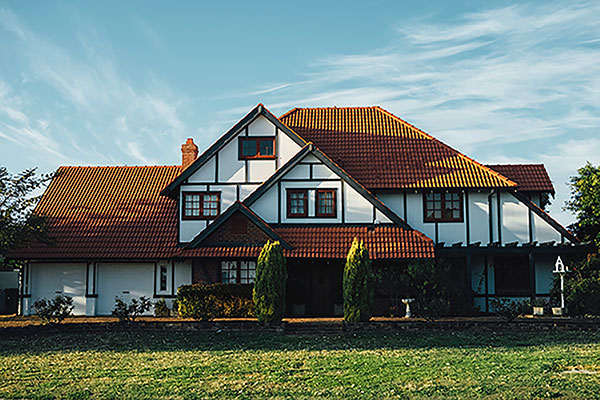Memo to first-time home sellers:
This is not your father’s housing market.
Today’s buyers are pickier and have more tools in their tool belts.
Consequently, sellers may have to spend more time and cash making their homes camera-ready.
For first-time sellers who have never been through the process before, it’s a different world. One where the value of the house isn’t measured solely by the profit made on the sale, but in part by the enjoyment the owners had from living in the home.
Here are seven things experienced sellers would tell you, if they could.
1. Price it realistically from the start
 “Your largest number of showings will occur in the first two to three weeks,” says Mark Ramsey, broker with the Ramsey Group/Keller Williams Realty in Charlotte, North Carolina. One reason: “The (multiple listing service) systems and the Internet tend to drive the majority of showings,” he says. Many buyers are plugged in electronically. So the minute something new pops up that meets their criteria, they want to see it.
“Your largest number of showings will occur in the first two to three weeks,” says Mark Ramsey, broker with the Ramsey Group/Keller Williams Realty in Charlotte, North Carolina. One reason: “The (multiple listing service) systems and the Internet tend to drive the majority of showings,” he says. Many buyers are plugged in electronically. So the minute something new pops up that meets their criteria, they want to see it.
Take advantage of that sweet spot by pricing the house competitively right out of the gate, he says.
When first-time sellers James and Emily Foltz put their Oklahoma City home on the market last summer, their agent gave them a comprehensive list of the initial asking prices of nearby homes like theirs, along with the final selling prices. “Some varied by $30,000,” according to James Foltz.
It gave them insight into setting their own home’s list price.
And how you style the price is important. The Foltzes first marketed their home for $155,000. But lowering it to $150,000 meant the listing appeared within the computer search parameters that buyers commonly used in that price range, Foltz says.
The result: A few weeks after the price change, they had a winning offer.
2. Be prepared to lose some money
 Want to sit with a house that won’t move? Be the first-time seller who insists you can get the appraised value, the tax assessor’s estimate or whatever you paid a few years ago.
Want to sit with a house that won’t move? Be the first-time seller who insists you can get the appraised value, the tax assessor’s estimate or whatever you paid a few years ago.
“It seems like there’s no relationship between your assessed value, taxable value and the actual market value of our house,” says Pat Vredevoogd Combs, past president of the National Association of Realtors and vice president of Coldwell Banker AJS Schmidt in Grand Rapids, Michigan. “There doesn’t seem to be any correlation.”
The truth is that your house is worth what buyers are willing to pay. No more. “This is a true market that Adam Smith would have loved — totally based on supply and demand,” Combs says.
Beware the agent who promises big profits, Combs says. That person may just be after your business. “Don’t go with anyone who doesn’t use comps,” she says. And study sales prices, not asking prices, for real estate.
3. Promotion, promotion, promotion
 One question to ask yourself and pose as you interview agents: How will you reach the home’s target market?
One question to ask yourself and pose as you interview agents: How will you reach the home’s target market?
“You have to consider who your most likely buyers are for what you’re selling and cater to that group of people,” Ramsey says.
Don’t neglect the modern version of curb appeal: using lots of photos on real estate listings’ websites. However you market your house, you need a good number of clear, well-lit, professional-quality pictures that show your house at its best.
The typical starter home can also appeal to downsizing empty nesters, says Ramsey. To serve their needs, you might also want to have a phone number that instantly reaches someone who can provide details and answer questions, he says.
4. Throw in extras
 When the Foltzes were getting ready to move, they knew that they probably wouldn’t be able to take their top-of-the-line gas clothes dryer. “It’s not a typical thing in a lot of houses,” says Foltz.
When the Foltzes were getting ready to move, they knew that they probably wouldn’t be able to take their top-of-the-line gas clothes dryer. “It’s not a typical thing in a lot of houses,” says Foltz.
So they offered to sell the washer/dryer set, as well as a few other items that would be difficult to move, like the two wall-mounted, flat-screen TVs.
While the couple hoped these perks would bring a little extra money to the table, it didn’t work out that way. But it did sweeten the pot for the buyer, who agreed to buy at full price if the Foltzes included those items.
Since taking them would have netted them additional headaches, their “extras” became a good selling point.
5. Clear the clutter
 Keeping your house clean is important in every sale. But first-timers are likely selling smaller houses, and clutter can mean the difference between cozy and cramped.
Keeping your house clean is important in every sale. But first-timers are likely selling smaller houses, and clutter can mean the difference between cozy and cramped.
Clearing the clutter is “something we spent two to three weeks doing before we brought anyone in,” says Foltz. While they believed their home would show better furnished, they also wanted to pare down all the nonessential pieces. And they stored the “leftovers” in the garage.
Before they put it on the market, the Foltzes asked their agent’s opinion. “We told him: We’re willing to do whatever you want,” Foltz says. The agent’s recommendation: Get rid of the bedroom dresser to make the room feel more spacious.
Kitchen and bathroom countertops are another hot spot that many sellers forget to clear. The same chaos that represents your normal routine makes your house seem messy, disorganized and uninviting to buyers.
6. Appeal to lazy buyers
 Most buyers are lazy.
Most buyers are lazy.
The last thing a new homeowner wants is another to-do list, Ramsey says. So get the home move-in ready before it hits the market so the buyer can start fresh easily.
That means making all the repairs and replacements that you would demand if you were buying the house today. If you have to walk single file up the walkway, trim the bushes. If the garage door is dented, have that fixed or replaced, Ramsey says. “If you go into a room and say, ‘Hmm, I wonder if this carpet is dirty enough to replace?’ You have your answer,” he says.
First-time sellers are likely selling smaller, starter homes which are popular with first-time buyers and empty nesters, Ramsey says. Neither group is likely to want to spend weekends tackling the jobs that you avoided.
“From a presentation standpoint, you want them to feel it’s turnkey — ready to go,” Ramsey says.
7. Put upgrade money where it counts
 If you’re looking to spend some money to make your house memorable, ask someone who knows what will improve the market value, says Combs.
If you’re looking to spend some money to make your house memorable, ask someone who knows what will improve the market value, says Combs.
She remembers one $90,000 starter home that the owners wanted to stand out from the pack. They did a very expensive kitchen upgrade with lots of high-dollar extras. Unfortunately, it was an older home “in a market that was never going to be above $90,000,” Combs says. “So the money they put in, they lost.”
Conversely, the Foltzes followed their agent’s recommendation to paint their stylish blue kitchen tan — to match the walls of the adjacent open living room and attract more buyers.
“The cheapest thing you can do for a house with the biggest bang for the buck is to paint and replace carpet,” says Ramsey. His recommendation: soft neutrals, which are easy on the eyes and have mass appeal.
Fresh carpet and that new-paint smell are also buyer-bait.
“I have never, ever seen a buyer get emotionally attached to a carpet-allowance sign,” says Ramsey. “What they fall in love with is the new carpet in the house.”




